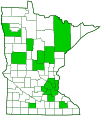common crane fly
(Tipula furca)
Conservation • Description • Habitat • Ecology • Distribution • Taxonomy
|
|
||||||||||||||
Description |
Tipula furca is a common, medium-sized, “large” crane fly. It occurs in the United States and southern Canada east of the Great Plains. Adults are active from April through September. They are found in grassy areas near streams. They are short-lived and do not feed. The larvae are aquatic. They are found in the moist earth and debris at the sides of streams. They feed on decaying vegetation, fungi, roots, foliage, and occasionally animal matter. Adults are slender, soft-bodied, yellowish brown or grayish brown, and ½″ to 11⁄16″ (13 to 18 mm) in length. There are two large compound eyes on the sides of the head and no simple eyes (ocelli). The compound eyes are bare, not covered with hairs. The antennae are short, about as long as the head. They have 13 segments. The segments are simple, not branched. Each segment has an enlarged base and a whorl of medium-length hairs at the base. The mouth parts are at the end of a short but conspicuous, snout-like projection (rostrum) on the front of the head. At the tip of the rostrum, on the upper side, there is a short, pointed extension (nasus). The lower jaws (maxillae) have long sensory structures (palps) attached. Each palp has four segments. The fourth segment is antennae-like and very long, longer than the first three segments combined. The upper thoracic plate (mesonotum) is brown with dull, darker brown, longitudinal stripes. It has a distinct, v-shaped groove (suture) on top near the wing bases. The wings have white and dark striping. There is a narrow brown stripe on the leading edge (costal margin), with a clear patch just beyond the midpoint, followed by a darker, brownish-gray patch. Cell m1 and the second cell m2 are uniformly darkened at the base. The first cell m2, which is the discal cell, is entirely clear. Cell r has a pale area before vein Rs. The outer part of cell R5 is white. The radius (R) vein has three branches. The radial sector (Rs) vein is long. The media vein (M) is dark, bold, and forked near the margin, and there is a dark seam on veins Cu and m-cu. The basal section of the first branch of the cubitus vein (Cu1a) is long and joins with the third media vein (M3), which makes the discal cell appear to have five sides. There are two anal veins, both of them long and reaching the wing margin. The cell at the end of the first branch of Cu1a, which is designated as cu1a, is only slightly wider at the base than at the margin. The legs are long and slender, but of normal length and thickness for a crane fly. The last part of the leg (tarsus) has 5 segments. The tarsus is not longer than the third segment (femur) and fourth segment (tibia) taken together. The abdomen is long and slender, but it is not greatly elongated. It has nine visible segments. It is dark brown with a pale, longitudinal stripe in the middle. |
Size |
Total length: ½″ to 11⁄16″ (13 to 18 mm) |
Similar Species |
Habitat |
Grassy areas near streams |
Ecology |
Season |
April through September |
Behavior |
|
Life Cycle |
|
Larva Food |
Decaying vegetation, fungi, roots, foliage, and occasionally animal matter |
Adult Food |
Adults do not feed |
Distribution |
||
|
Sources |
|
| 3/16/2025 | ||
Occurrence |
||
Common |
||
Taxonomy |
|
Order |
|
Suborder |
Nematocera |
Infraorder |
|
Superfamily |
Tipuloidea (Typical Crane Flies) |
Family |
|
Subfamily |
|
Genus |
|
Subgenus |
Yamatotipula |
Subordinate Taxa |
|
|
|
Synonyms |
|
Tipula bella Tipula fuscifer |
|
Common Names |
|
This species has no common name. The common name of the genus Tipula is common crane flies, and it is applied here for convenience. |
|
Glossary
Costal margin
The leading edge of the forewing of insects.
Femur
On insects and arachnids, the third, largest, most robust segment of the leg, coming immediately before the tibia. On humans, the thigh bone.
Ocellus
Simple eye; an eye with a single lens. Plural: ocelli.
Palp
Short for pedipalp. A segmented, finger-like process of an arthropod; one is attached to each maxilla and two are attached to the labium. They function as sense organs in spiders and insects, and as weapons in scorpions. Plural: palpi or palps.
Rostrum
The stiff, beak-like projection of the carapace or prolongation of the head of an insect, crustacean, or cetacean.
Tarsus
On insects, the last two to five subdivisions of the leg, attached to the tibia; the foot. On spiders, the last segment of the leg. Plural: tarsi.
Tibia
The fourth segment of an insect leg, after the femur and before the tarsus (foot). The fifth segment of a spider leg or palp. Plural: tibiae.
Visitor Photos |
||
Share your photo of this insect. |
||
This button not working for you? |
||
Alfredo Colon |
||
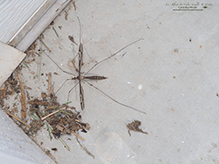 |
 |
|
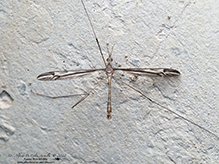 |
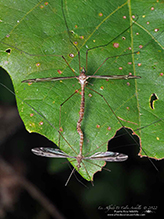 |
|
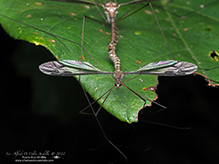 |
 |
|
 |
 |
|
Male |
||
|
||
|
Female | |
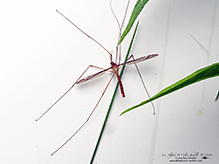 |
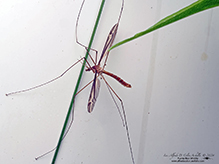 |
|
MinnesotaSeasons.com Photos |
||
|
||
|
||

Slideshows |
|

Visitor Videos |
||
Share your video of this insect. |
||
This button not working for you? |
||
|
Other Videos |
||
|

Visitor Sightings |
||
Report a sighting of this insect. |
||
This button not working for you? |
||
Alfredo Colon |
Location: Albany, NY |
 |
Alfredo Colon |
Location: Albany, NY |
 |
Alfredo Colon |
Location: Albany, NY |
 |
Alfredo Colon |
Location: Albany, NY |
 |
Alfredo Colon |
Location: Albany, NY |
 |
Alfredo Colon |
Location: Albany, NY |
 |
MinnesotaSeasons.com Sightings |
||
|

|
Created: 3/16/2025 Last Updated: © MinnesotaSeasons.com. All rights reserved. |
